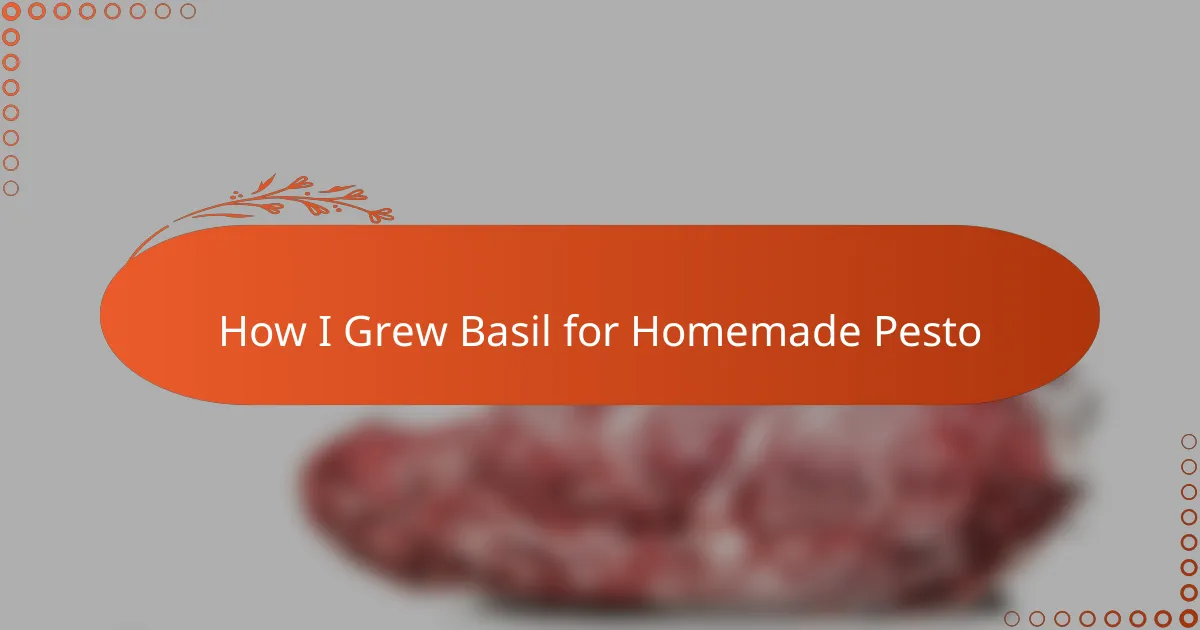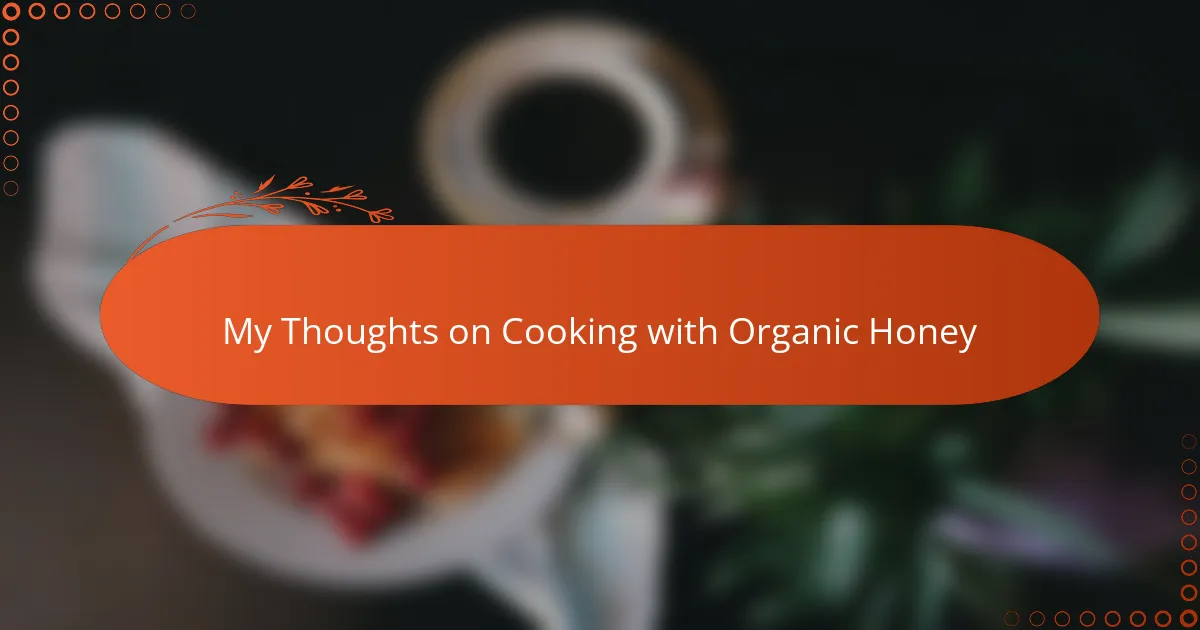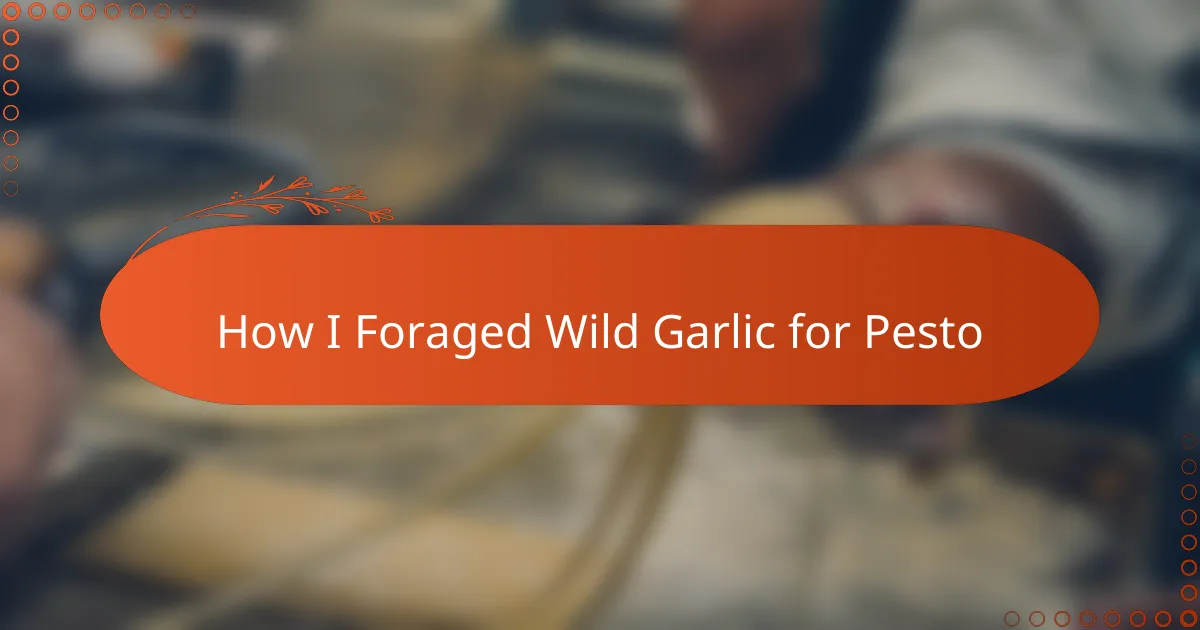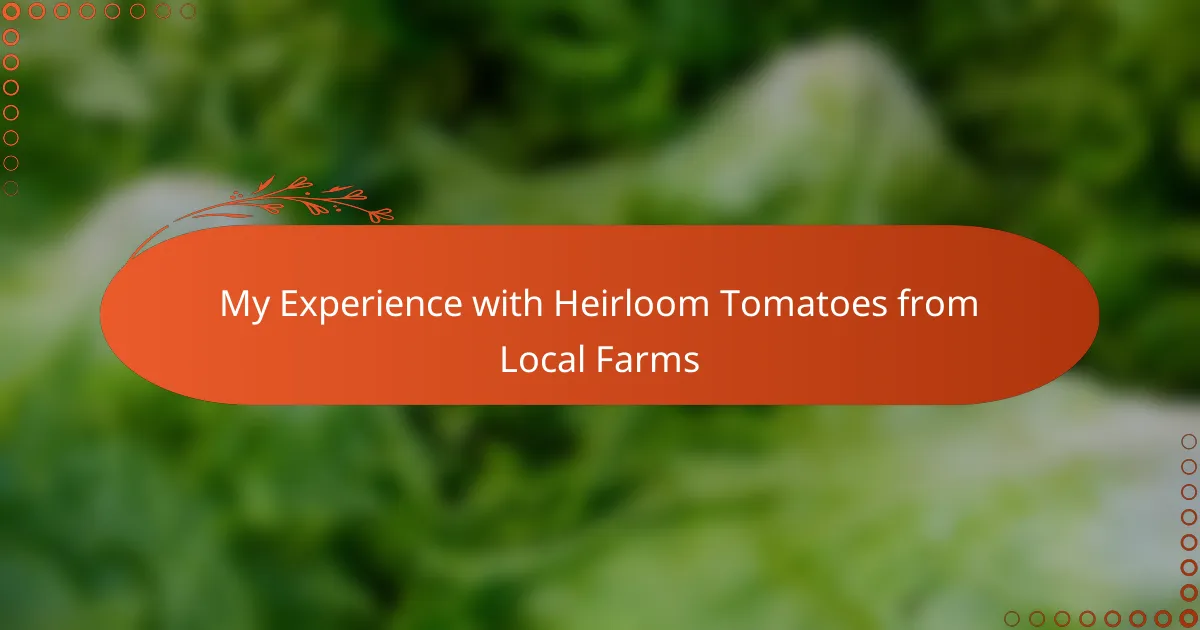Key takeaways
- Basil thrives in warm, sunny conditions, requiring 6-8 hours of sunlight and well-drained soil for optimal growth.
- Harvest basil before flowering to maintain its bright flavor; pinching the top leaves encourages bushier growth.
- Homemade pesto is easy to make using fresh basil, garlic, nuts, cheese, and olive oil, capturing the essence of summer in a dish.
- Fresh basil pesto enhances everyday meals, ideal for tossing with pasta, spreading on bread, or adding to soups for a flavor boost.
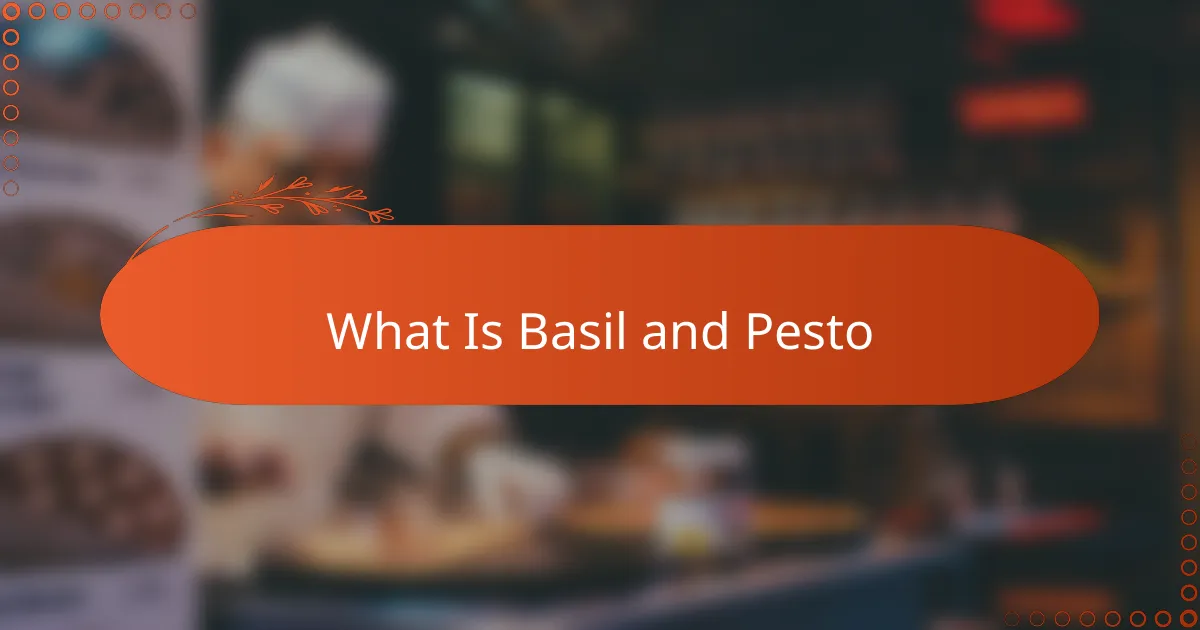
What Is Basil and Pesto
Basil is more than just an herb; it’s the fragrant heart of many dishes, especially in Italian cooking. When I first smelled fresh basil, it reminded me of sunny gardens and warm kitchens—a scent that instantly lifts my mood. Have you ever wondered why basil has such a powerful aroma that somehow feels both calming and invigorating?
Pesto, on the other hand, is a vibrant green sauce that highlights basil’s fresh, peppery flavor with a blend of garlic, nuts, cheese, and olive oil. The magic of pesto lies in its simplicity—just a few ingredients transformed into something rich and flavorful. I remember the first time I made pesto with basil from my own garden; the taste was far more intense and satisfying than anything store-bought.
In essence, basil and pesto are a perfect duo: one brings brightness, the other brings depth. They invite you to connect with the ingredients and savor the essence of fresh, homemade cooking. Isn’t that what homesteading is all about?
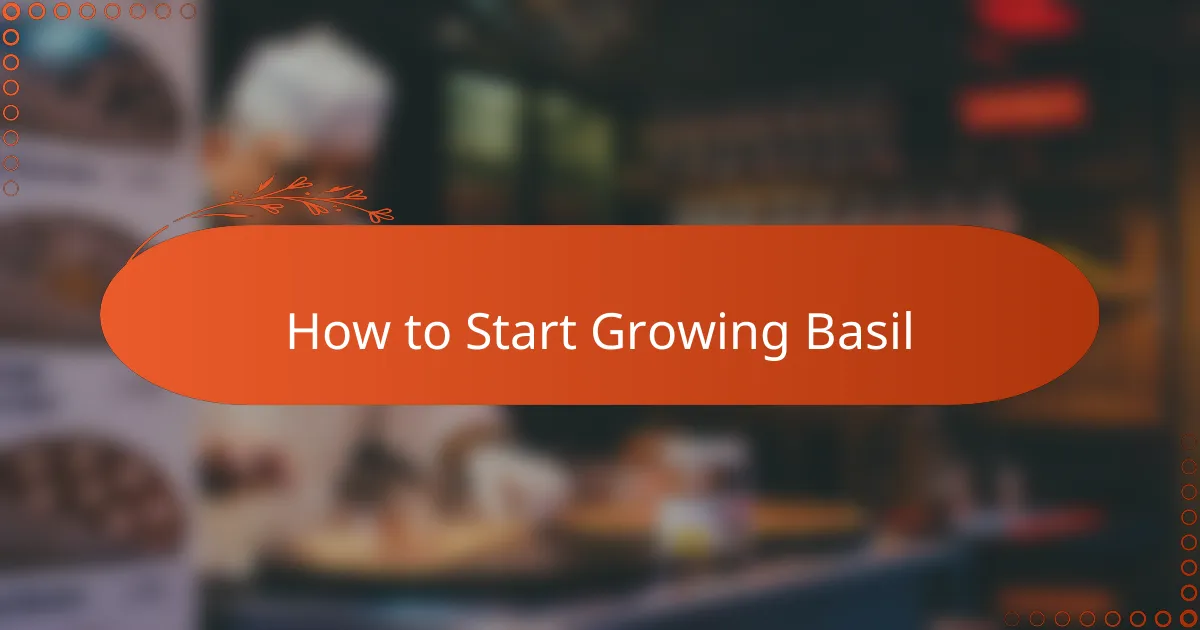
How to Start Growing Basil
Starting basil from seed was a bit of an experiment for me, but it turned out to be so rewarding. I learned quickly that basil loves warmth and sunlight, so I made sure to place my seedlings on a sunny windowsill where they thrived. Have you ever noticed how nurturing a tiny plant feels almost like caring for a pet?
I also discovered that basil prefers well-drained soil—too much water seemed to make my little plants droopy and unhappy. It took a few tries to get the watering just right, but once I did, the lush green leaves started sprouting faster than I expected. There’s something fulfilling about watching those first leaves open up day by day.
If you’re like me and enjoy hands-on gardening, starting basil indoors is a great way to connect with your food from the ground up. I can’t recommend it enough, especially if you want a steady supply of fresh leaves for pesto all summer long. Why not give it a try? It’s easier than you might think.

Best Conditions for Basil Growth
Basil truly thrives when it basks in full sunlight—at least six to eight hours a day. I remember once placing a pot in a shadier spot, and the leaves turned sparse and weak, almost as if the plant was asking for more light. Have you ever noticed how sunlight seems to energize not just people but plants too?
The soil plays a huge role as well. I found that basil loves soil that drains well; soggy roots made my plant sulk and slowed down growth. Getting the balance right wasn’t easy at first, but using a mix with good drainage kept my basil happy and vibrant, almost as if it was telling me, “This is just perfect.”
Temperature is another factor that I didn’t initially think about, but basil prefers warmth—ideally between 70 to 85°F. I learned that even a slight chill in the air made my plants curl their leaves and stop growing. It made me realize how sensitive this herb is, just like us craving cozy warmth on a crisp day.

Harvesting Basil for Cooking
Knowing exactly when to harvest basil was a learning curve for me. I found that picking the leaves just before the plant flowers keeps the flavor bright and vibrant—once those tiny white flowers appear, the leaves can taste a bit bitter. Have you ever snipped basil too late and wondered why it didn’t taste as fresh?
I usually harvest basil by pinching off the top sets of leaves with my fingers, which not only feels satisfying but also encourages the plant to grow bushier. There’s something strangely rewarding about using your hands to nurture and then collect your food—it connects you to the whole process in a way that buying herbs from a store never can.
One season, I got a little carried away and harvested too much at once. The plant looked sad for a few days, but I was surprised to see it bounce back quickly when I gave it some TLC. It reminded me that basil is quite resilient, as long as you don’t strip it bare. Have you experienced that mix of patience and reward when tending to your garden’s herbs?

Making Homemade Pesto from Basil
Making homemade pesto from basil is where all the hard work of growing pays off in the best possible way. I still remember blending those fresh, vibrant leaves with garlic, pine nuts, Parmesan cheese, and olive oil, and being amazed at how intensely flavorful it all came together. Have you ever noticed how little effort it takes to create something so rich and aromatic that instantly transforms a simple meal?
The key is to use basil that’s fresh and young—those tender leaves pack the most punch and bring that bright, peppery kick to pesto. When I make mine, I skip the mortar and pestle and use a food processor, which saves time while still giving that creamy texture. It’s such a satisfying feeling to see a bowl of bright green pesto ready to splash on pasta or fresh bread—like capturing summer in a jar.
One tip I’ve learned is to add the olive oil gradually, making sure it emulsifies well so the pesto comes out smooth and glossy rather than oily or grainy. The moment I spoon it onto a warm dish and take the first taste, I’m reminded why I go through all the dirt and effort with basil. Doesn’t homemade pesto make you feel connected to your food in a way store-bought just can’t match?
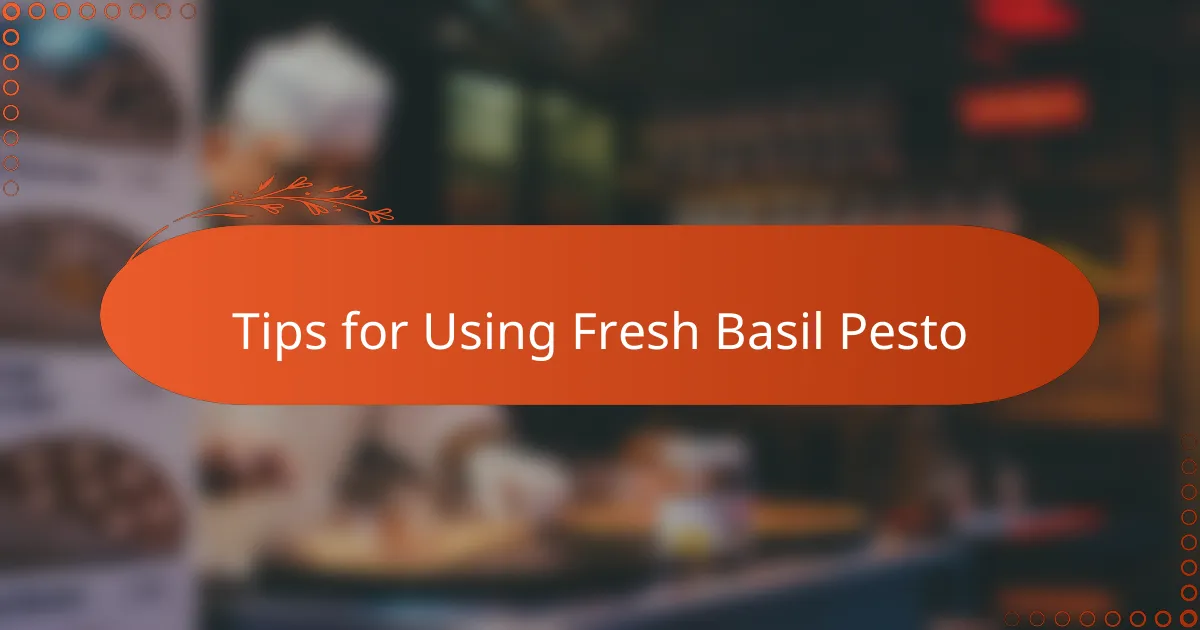
Tips for Using Fresh Basil Pesto
Using fresh basil pesto feels like an invitation to elevate everyday meals with minimal effort. One thing I’ve learned is to toss it gently with warm pasta right after cooking—that way, the pesto warms slightly and releases all those fragrant oils without losing its vibrant color. Have you ever noticed how a simple spoonful of pesto can turn plain noodles into something extraordinary?
I also love spreading pesto on toasted bread or mixing it into creamy dips. It adds a burst of fresh, herby brightness that makes snacks and appetizers feel special. Sometimes, I even stir a dollop into soups just before serving to give them a subtle lift—have you ever tried that trick? It’s a small change but really wakes up the flavor.
If you’re thinking about storage, keep pesto in a jar topped with a thin layer of olive oil to preserve that fresh taste longer. From my experience, freezing portions in ice cube trays works wonders too—just pop out a cube when you need a quick hit of homemade goodness. Isn’t it amazing how something so simple can be so versatile?
